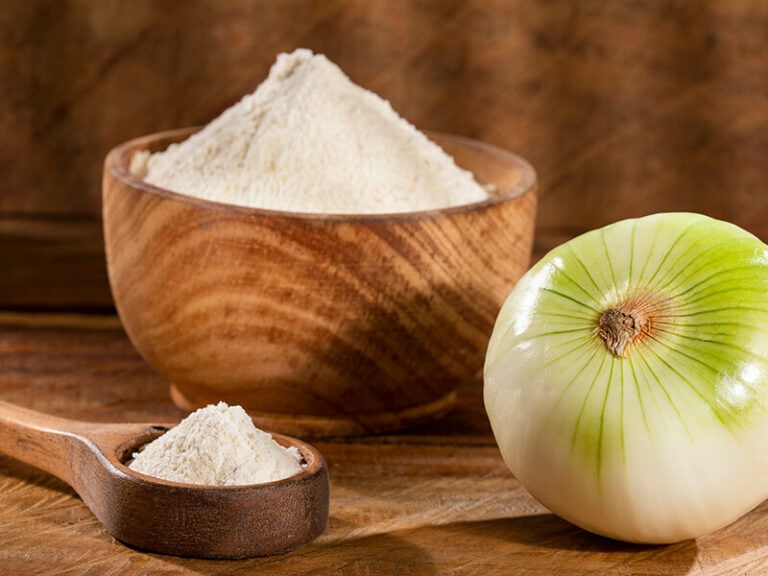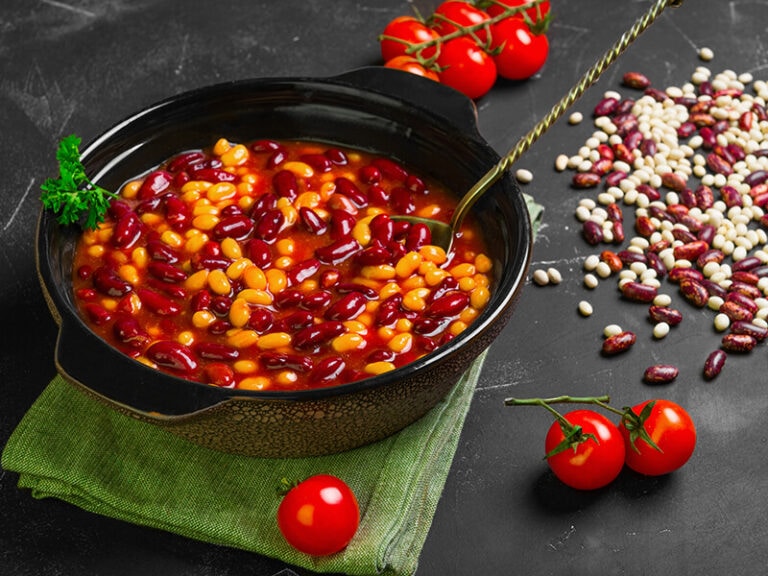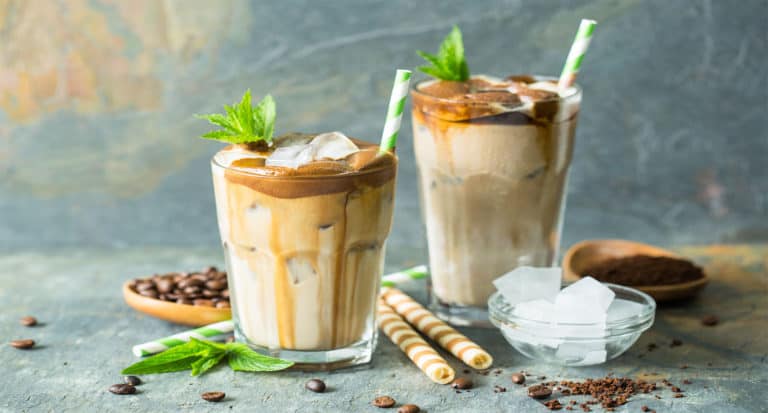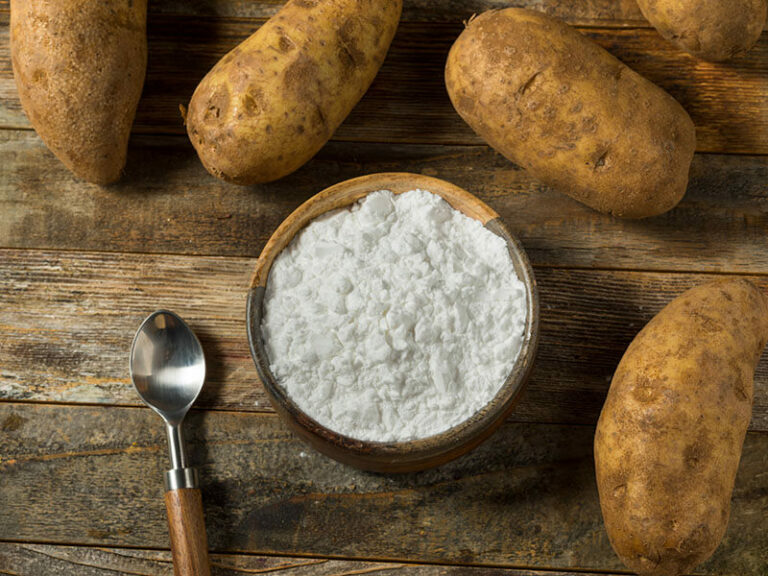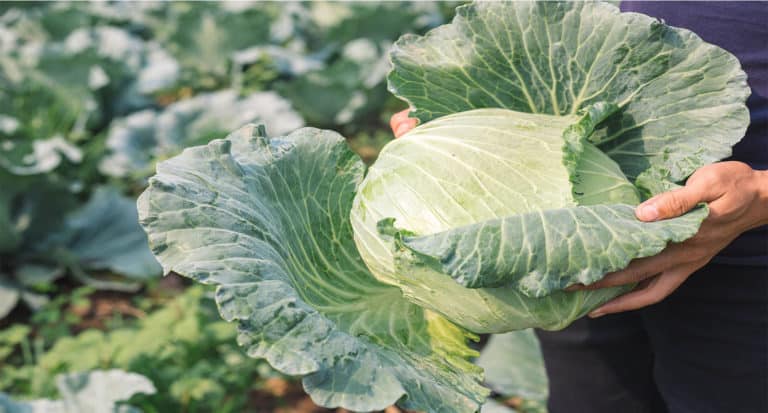When it comes to the debate between manuka honey vs. raw honey, can you tell which one is better? I mean, better in various aspects, like nutrients, health benefits, or better for your pocket, for example.
I know you have your own answer already, but there are many other things about them that I bet you have not known yet. Therefore, why don’t you take a couple of minutes to grasp and learn new knowledge about manuka honey and raw honey? I promise you will be surprised.
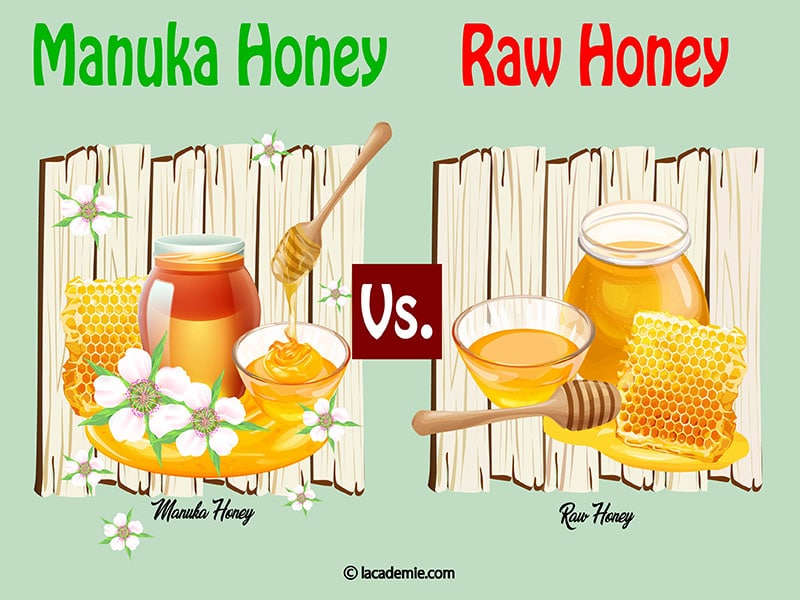
Find Out The Differences Between Manuka Honey And Raw Honey
There are various delicious honey types on the shelf in the supermarket, but manuka honey and raw honey are the main topics today. So what you can get here is the comparison of 2 such honey regarding various characteristics like taste, texture, uses, health benefits, and more.
After that, you can find out which one is more suitable for you. But overall, both manuka and raw honey are healthy food sources that you can get to your body.
Honey – The Extraordinary Gift For Human
That’s right! Honey has always been a fantastic food and medicine for so many years. It is a valuable product from bees that offers many health advantages. If you’re worried if honey contains gluten or not, the short answer is, it is not.
There are more than 300 types of honey, based on different nectars in different flowers where bees suck the honey. But in this article, I will only emphasize the difference in features of manuka honey and raw honey. So let’s begin with what manuka honey is.
Manuka Honey And Reasons Why They Are Expensive
Manuka honey is now famous around the world, especially in New Zealand and Australia; however, it always comes at a high price. Have you ever been curious about what makes manuka honey so unique that it is costly? Here is something about it you should know.
How Was Manuka Honey Made?
Like other honey, manuka honey is also the product of hard-working bees, which suck and swallow the nectar in flowers, then bring it to their hive and keep the nectar in the bee’s honeycomb.
Once the nectar transforms into sugar, or you can say, honey, this is the viscous liquid form that you usually see. But the key point here is that manuka honey is from the bees that collect the nectar in the manuka plant.
Manuka plant (scientific name as Leptospermum scoparium) is native to New Zealand and Southeast Australia. Manuka flowers, where bees can get the nectar, are white or pink (sometimes) with 5 petals and around 0.31 to 0.59 inches in diameter(1).
New Zealand’s neighbor, Australia, also produces manuka honey, though they extracted the honey from other plants called Jellybush and Golden tea trees.
Some manuka honey is 100% raw as it has not gone through any heating or pasteurizing stage, but some might be processed based on the manufacturer.
But why is manuka honey, especially high-quality manuka honey from the best brands, so expensive? Because manuka plants are rare and do not grow everywhere. They can only be found in some specific places, making this honey unique and costly.
Another fact about this type of honey is the antibiotic compounds like hydrogen peroxide and methylglyoxal (MGO) from the bee enzyme, which produces manuka honey. These compounds have solid antibacterial benefits that can help you prevent dangerous bacteria.
And since their antibacterial properties are too good, manuka honey has its own rating called Unique Manuka Factor (UMF) that you can find on the package. And how to read and understand these specifications, the following will show you.
Find out how come manuka honey is so high-priced with this lively information.
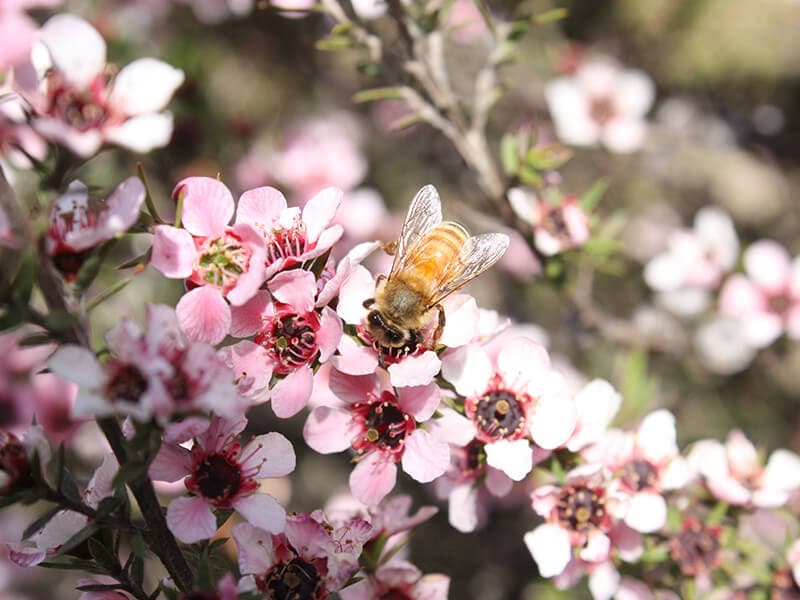
How To Read Manuka Honey Signature Compounds
This information is really important if you want to buy the appropriate manuka honey for yourself. First, you need to understand what UMF indicates.
The UMF means the antibacterial level, or you can understand the methylglyoxal (MGO) level. Manuka honey will not have an equal MGO level. That’s why it requires tests to certify the MGO and UMF before selling.
The higher MGO and UMF level, the more beneficial benefits you can get from consuming it. Here is a short table to understand these numbers.
Raw Honey – Bee’s Authentic But Beneficial Product
So manuka is one of the most beneficial honey; how about raw honey? Do not underestimate it, because it also has many exciting details waiting for you to explore.
General Information About Raw Honey
Basically, you can understand raw honey is what you can get from the hive directly. It has not been filtered, processed, or pasteurized. Raw honey is not limited by what type of nectar bees collect so that it can be from any plant, even manuka.
As they are raw and unpasteurized, some people are concerned about their safety. But in reality, it shows the opposite. As it has not undergone any artificial process, raw honey can retain all the vitamins, minerals, protein, enzymes, and other valuable compounds, like in manuka honey.
And no research has proved that raw honey is unsafe for humans. However, as it is unrefined, you might find some pollen in raw honey.
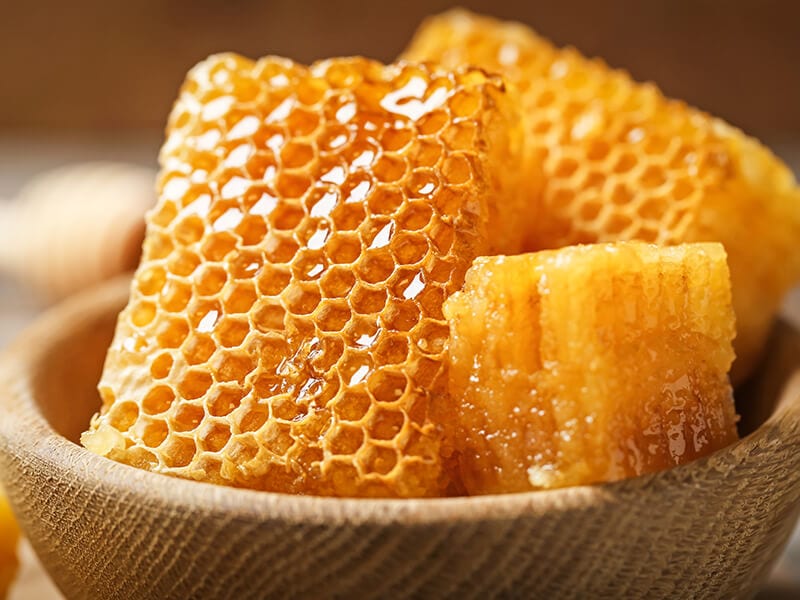
Health Benefit Of Raw Honey
Overall, raw honey has more health benefits than other regular honey sold on the market because most commercial honey is processed products and loses many healthy nutrients during the heating process.
But as raw honey can sustain most of the nutritional components, it consists of more than 30 minerals, 22 amino acids, along with vitamins, proteins, and enzymes. Moreover, the antioxidant compounds in raw honey are 4.3 higher than processed ones.
All of the nutrients in raw honey imply it is an anti-bacteria fighter to help prevent many diseases from minor ones like sore throat and allergies to serious ones like cancer, cardiovascular diseases, etc. And if you are looking for a good diet, raw honey can be your ideal choice.
Manuka Honey vs. Raw Honey – Who Is The Winner?
The main section in this post is to show between manuka honey and raw honey, which one is superior. So let’s compare these 2 honey and see.
1. Texture And Color
Manuka honey has a darker color, like tan or deep yellow. Besides, the colors of manuka honey are varied as it is based on the UMF level.
Another thing is raw honey’s texture is that it is easier to be crystalized than conventional pasteurized honey. So you might find it rough and less smooth, making it less attractive.
So if you plan to mix honey with aloe vera as a way to keep aloe vera fresh, you might want to opt for premium manuka honey instead of raw honey, which might have adverse effects on your aloe vera.
Raw honey has a golden or amber color but is not really transparent. However, it might contain some dirt particles, pollen, wax, even yeast in its viscous liquid as it is unprocessed and unstrained honey.
Another thing is raw honey’s texture is that it is easier to be crystalized than conventional pasteurized honey. So you might find it rough and less smooth, making it less attractive.
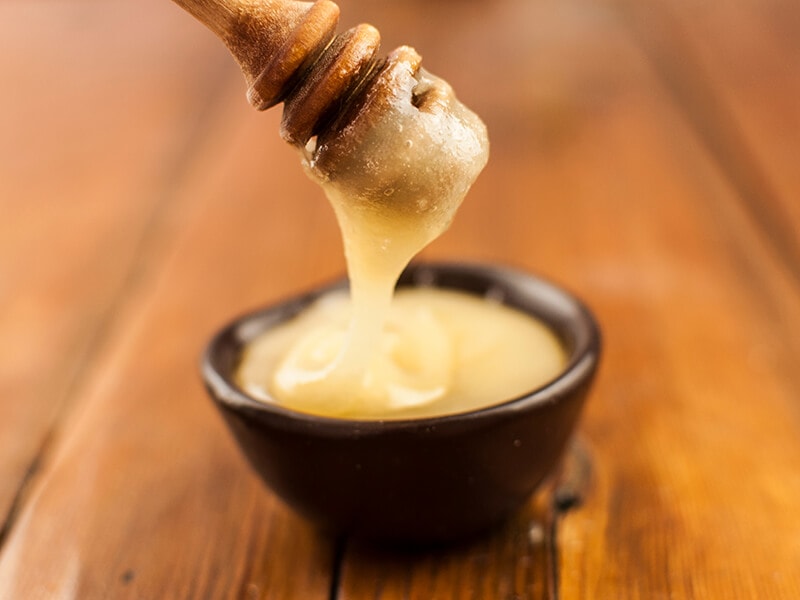
2. Flavor
Manuka honey’s flavor is pretty sharp and rich overall. It tastes somewhat earthy, bitter, oily, and mineraly that you cannot find in other regular honey. You can also feel a slight aromatic floral undertone in manuka honey. Besides, they are not as sweet as other types.
However, as manuka honey tastes also depend on its UMF rates, the higher rate means a stronger flavor. The reason for that is the nutritional components in manuka honey can affect the flavor.
Over time, manuka honey’s taste becomes more intense and unique, though it still has a hint of lightly sweet and aromatic floral flavor.
Raw honey, however, can be made from various nectars, resulting in varied tastes, depending on what types of flowers the bees collect.
For example, sage honey has a sweet fruity flavor mixed with a slightly spicy flavor. Or clover honey, the most popular honey sold on the market, tastes light and sweet.
Overall, raw honey taste can be mild sweet to bold flavor. But if you want to compare the processed honey taste with this one, raw honey is more robust.
3. Experiment Level
Manuka honey undergoes many tests by experts before being sold to the market. These tests will determine the antibiotic and antibacterial components in it to identify the UMF rates. The higher the UMF level, the higher the quality of this honey.
In contrast, raw honey is 100% raw without any human process or any test. Therefore, the USA government has no official definition for raw honey until now.
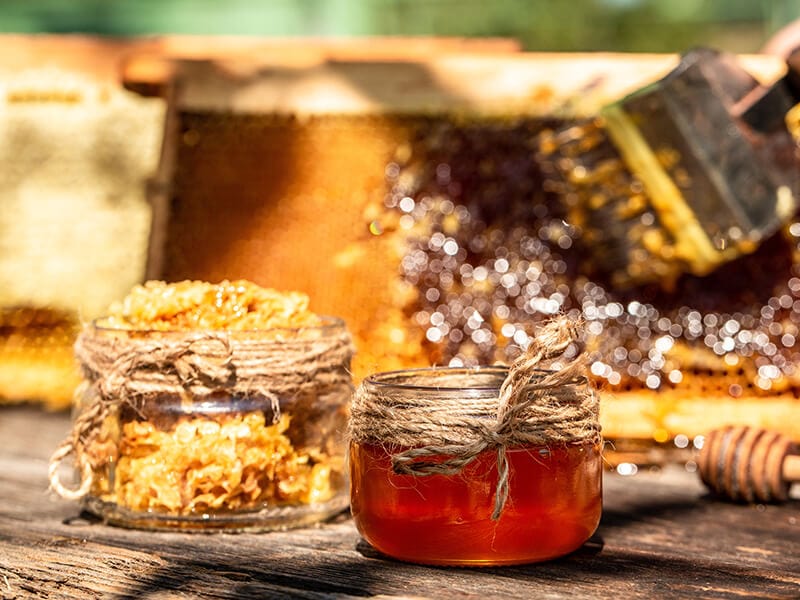
4. Health Benefits
As you can understand, both honeys are packed with many health benefits that you can absorb as a sweetened food, but here is a comprehensive look at the natural beneficial factors, particularly in manuka honey.
High Antibacterial Components
First, the beneficial highlight of consuming manuka honey is its much higher concentration of MOG – an antibacterial component compared to other conventional honey (2). Plus, it contains leptospira and DHA that are also good for your health.
So it can be seen as an excellent remedy for healing injuries (e.g., skin rashes, burns, minor cuts, wounds, etc.). All you have to do is apply this honey to affected areas.
Ideal Product For Skin and Hair
Manuka honey is also perfect for your hair, skin and helps you forget the nightmare about dandruff and acne.
It prevents wrinkles, fades scars, and provides moisture to your skin. Thus many companies use this honey to produce skin treatments.
Prevent Minor Illnesses and Boost Immune Function
It speeds up the recovery time from colds, flu, and sore throat. That’s why you might see manuka honey listed as an ingredient in some cough drops.
With a spoon of manuka honey in your drinks, you are protected from many bacteria as the antibacterial level in this honey is higher than in other varieties. Also, it will keep your body warm in the winter by eating manuka honey once a day or more.
And if you have weak digestion and an immune system, manuka honey can boost these functions with just 1 to 2 teaspoons daily.
Packed Of Many Other Nutrients
In raw honey’s case, as shown above, though it still sustains most of the nutrients and has antibacterial compounds to prevent infections, its health benefits are lower than manuka honey.
Besides, raw honey has no additives or sugar; you will not have to worry about the calories that you might gain from using it. But in general, if you want a better solution for your health and skin, mainly to prevent infection, the manuka type is ideal.
Manuka honey can be seen as medicinal honey as they are packed with many health advantages. Watch this video to know:
5. Health Risks
Manuka honey is not safe for babies younger than 18 months since the enzymes and antibacterial function in such honey are too strong while the baby’s gut has not developed to tolerate these properties.
Therefore, do not feed your baby manuka honey; your child might suffer infant botulism, which can be worse than using raw honey.
The medicinal properties of manuka honey can have a negative effect on some medicines, like chemotherapy. So it would be better to consult with your doctor before eating manuka honey in this case. And manuka honey might not fit well with allergic-to-honey people.
Similar to manuka honey, raw honey is not suitable for infants under 18 months. The pollen in raw honey is another factor that people who have bee allergies should be concerned about.
It can lead to serious allergic symptoms and more jeopardize your health rather than processed honey.
6. Availability And Price
Since manuka honey can only be obtained from some specific plants, which is rare, its availability is not too popular unless you live in New Zealand and some Australian regions.
You might buy it online if your country does not import this item. However, you will carry some shipping costs. And as manuka honey is rare, its unit price is more expensive than raw honey.
Raw honey is easier to buy compared to manuka honey. Though you still cannot find it in the supermarket as they only sell processed honey there, you can only get it from a beekeeper’s farm.
So it might take more time and effort to have fresh, raw honey as you need to travel to the honey source. However, because raw honey has not undergone any process, its price is way lower than manuka honey.
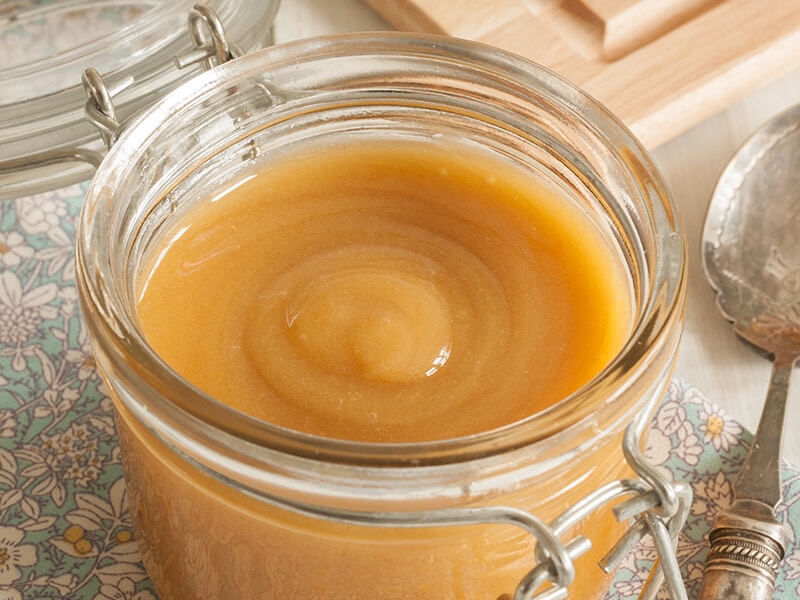
Culinary Recipes For Manuka Honey And Raw Honey
As they are sweet and easily combined with any dish or drink, with a spoon of honey, either manuka or raw ones, they are all good for your stomach and body in general.
1. Manuka Honey Tea
I will start my list with a cup of tea and manuka honey. If you want to start a brand new day full of energy and in a good mood, this tea recipe is what you desire.
Nothing is hard. A little bit of ginger, some lemon juice, tea, and a spoon of manuka honey blended in warm water. Now, serve it along with your breakfast to see how wonderful it is.
Not confident in your tea making skills? Fortunately, there are plenty of high-quality pre-made ginger teas out there for you to grab. Just pay attention to the tea’s shelf-life, as many store-bought flavored tea can expire much faster than you expect.
Nothing can beat a cup of tea with lemon, ginger, and manuka honey in the morning. Watch this video:
2. Manuka Honey and Tofu
When regular tofu no longer entices you, but you don’t want to risk leaving it in the fridge for too long because you’re not sure if tofu can spoil, what do you do? How about trying out this recipe for manuka honey and tofu, which boast delightful flavors that will certainly excite you.
In fact, this recipe is quite versatile in combination with other food besides tofu. Honey will be mixed with many spices and sauces, then coat the mixture on tofu to enhance the inherent bland flavor of tofu.
Then you can eat your tofu with rice, either regular rice or sushi rice. Adding some veggies to your dish is also a great way to make a meal tastier.
3. Raw Honey Granola
Granola is my favorite summer breakfast dish or snack. With oats, nuts, and honey, this dish is such a superb food source to improve everyone’s health.
I will use raw honey in this dish, mix all ingredients in a big bowl and stir well. Then spread them on a baking sheet and bake in 10 to 25 minutes, depending on how big your granola batch is. Do not forget to enjoy them with yogurt or ice cream for a full-of-texture dish.
Looking for a healthy and quick snack? Can I interest you with some raw honey granola?
4. Fermented Honey Garlic
Garlic and honey are a good combo. Today, I will show you how to make fermented honey garlic with only a few ingredients and prep steps.
You only have to combine garlic and honey into a clean jar. Ensure the honey can cover the garlic thoroughly, then close the lid and store it in your pantry for up to 1 month.
Key Notes About Honey Storage For Long-Term Use
Don’t worry if you don’t know the correct way to store honey. Whether manuka or raw honey, it is simply straightforward. Like other kinds of food, there are 3 basic ways to store honey: at room temperature, in the fridge, or in the freezer.
At Room Temperature (In Your Pantry)
For storing at room temperature, you can keep them in a glass jar, or just leave it in the original container, as long as it is not leaked or damaged. Make sure the place you store them is dry and cool.
The best temperature to store honey is from 50 to 70 F degrees (10 to 20 C degrees). Avoid placing them in warmer areas or under direct sunlight as the heat will harm your honey.
If you store them well at room temperature, for manuka honey, it can last beyond their “best-by date”, so it can be safe to eat in around 3 years. But raw honey, in proper care, has a shorter shelf life, which is about 2 years.
In reality, people also believe that honey can last forever if they always keep them in a sealed container and away from bacteria or moisture.
In Your Refrigerator
Another way to keep your honey last longer is in the refrigerator. However, as honey will be crystallized easily in cooler temperatures and make it hard to spread, I do not really recommend this way. But once your honey is in crystallization state, you can fix it with hot water.
If you store your honey in a glass jar, you can put them in a pot of boiling water. Make sure the lid is completely sealed. Then, turn off the heat and allow your honey to cool down. Now you will see it is in liquid form again.
But if your honey container is plastic, you should not put them directly in boiling water on the stovetop. Once the water is boiled, you have to wait 5 more minutes to let it cool a little bit, then place your honey container in the water pot afterward.
How to resolve crystallized honey? Here is what you should do.
In Your Freezer
If you do not like refrigerator crystalized honey, you can freeze them. But you will need a bigger container as honey can expand when they are frozen.
You can also set them into smaller portions by using an ice cube tray. It is more convenient to thaw and consume. Freeze your honey in an ice tray first, then move these frozen honey cubes into another air-tight bag to store.
With this proper storage in the freezer, you can enjoy your honey for years safely. But it will not cost anything to label the day on the bag in case you might forget the time you put them there.
Thawing honey is also easy. Just let it sit at room temperature and thaw out naturally. Do not use a microwave or stovetop to heat your frozen honey.
FAQs
Here is some more information about manuka, raw, and even other honey types to expand your knowledge about honey. So do not pass this section as you do not know what you will miss.
So, What Is Your Favorite Honey?
The final word about manuka and raw honey to identify which one is better totally depends on your choice. Two of them both have many health benefits, especially manuka honey.
If you do not care about money, you can choose manuka honey as they are higher in nutritional components. But raw honey is still good overall with an affordable price. And you can buy it more easily, compared to manuka honey.
So tell me your opinion about these 2 in the comment part. And do not hesitate to try some recipes here with honey to improve your health, then come back here to share with me your experience with honey in these dishes. Thank you and see you in the next article.
References
1. En.wikipedia.org. 2021. Leptospermum scoparium
2. Elvira, M., 2008, ‘Identification and quantification of methylglyoxal as the dominant antibacterial constituent of Manuka (Leptospermum scoparium) honeys from New Zealand’, Molecular nutrition, vol.52(4),pp. 483-489.

